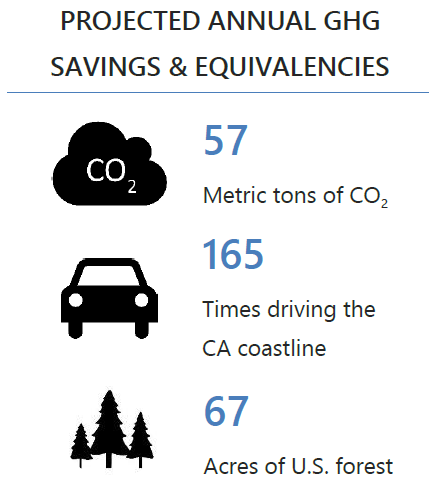CASE STUDY: THE ALLISON
Energy Savings for Supportive Housing Development
Wakeland Housing and Development Corporation (Wakeland) is a leader in the creation and operation of affordable housing in California. Since 1998, Wakeland has created over 7,300 affordable homes throughout the state. Several of Wakeland’s properties, including The Allison, provide supportive housing services to their residents to address the needs of people who have experienced homelessness. In fact, 48 out of the 58 units at The Allison are set aside for formerly homeless people. Wakeland properties bring a sense of hope to their residents; a place where they can thrive in their home for the long term.
When Wakeland sought to renovate the aging supportive housing property, improve energy efficiency, and decrease tenant utility bills and site-wide operating costs, they turned to LIWP-Multifamily. With funding and no-cost comprehensive technical assistance from LIWP Multifamily, The Allison completed top-to-bottom renovations in 2018 that included water and energy-conserving upgrades, Energy Star appliances, and in-unit heat pump water heaters. The project also included an 87.2 kilowatt rooftop solar PV system, 96% of which directly offsets resident energy use.
Real Results: Reducing Resident Energy Burden
LIWP-Multifamily tracks the actual energy use post-construction using common area bills and aggregated anonymized resident consumption data from utility providers*. From energy efficiency measures alone, the property reduced their overall energy use (combined BTU savings) by more than 20%, saving residents an estimated $8,300 on energy bills costs in the first year.
Once installed, the new solar PV system also generated 128,623 kWh in its first year, offsetting approximately 69% of the electric energy usage at the property. With 96% of the energy production from this system allocated to resident meters, the residents at Reverend Glenn Allison saw a 77% reduction in energy use from both the energy efficiency measures and solar PV system in the first year, which is estimated to save residents $42 a month on their energy bills.


